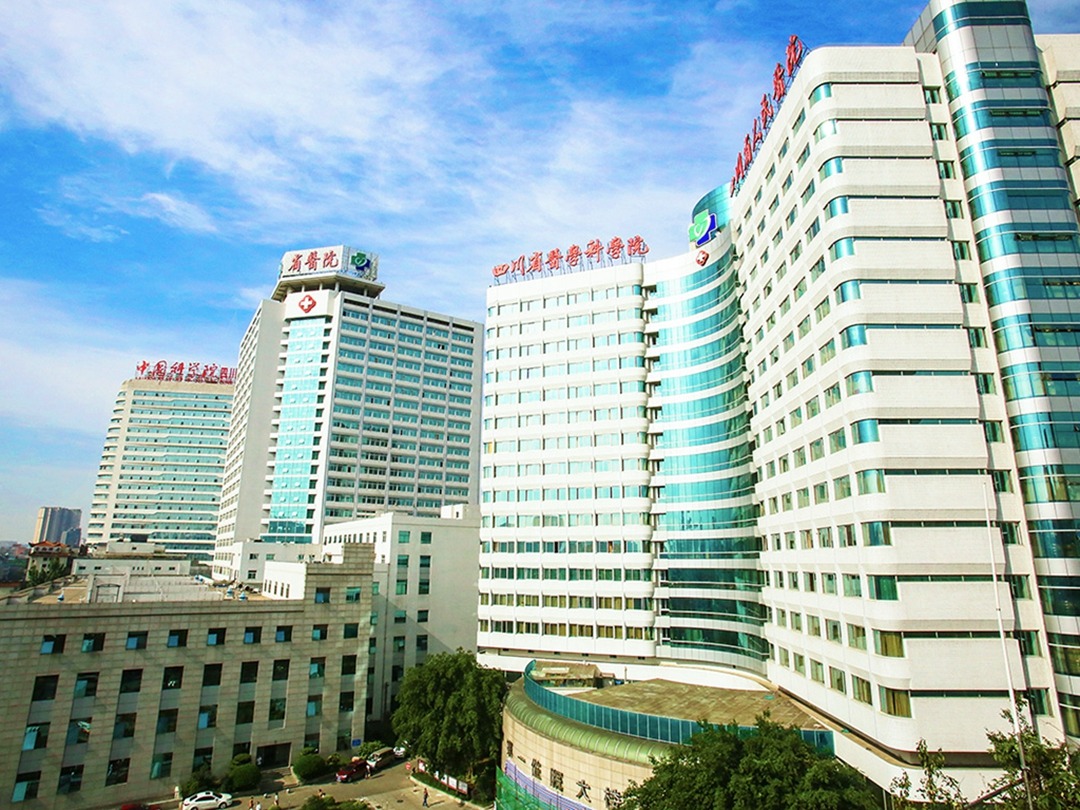Department of Neurosurgery, Sichuan Provincial People's Hospital, University of Electronic Science and Technology of China
2024-06-26
The team's academic cooperation achievements and documents with the Department of Neurosurgery of Sichuan Provincial People's Hospital of University of Electronic Science and Technology of China:
1. History of the Department
The Department of Neurosurgery of Sichuan Provincial People's Hospital was established in the 1960s by Vice President Li Futian, a famous neurosurgeon. After more than 60 years of construction and development, under the leadership of senior predecessors such as Vice President Li Futian, Director Zhang Lifu, Vice President Jiang Wanshu, and Director Huang Guangfu, and with the joint efforts of all colleagues in the department, the construction and development of the discipline has made remarkable progress. In terms of endoscopic and microsurgery of skull base brainstem tumors and deep brain tumors, microsurgery and endovascular interventional treatment of complex cerebrovascular diseases, microsurgery of spinal cord diseases, treatment of craniocerebral injuries, functional neurosurgery, stereotactic radiosurgery, and neurosurgery intensive care, the diagnosis and treatment technology level has reached the leading level in the southwest region and the advanced level in China.
It was approved as a key discipline in Sichuan Province in 2007, and passed the evaluation of Class A key disciplines in neurosurgery in Sichuan Province in 2010. In 2019, the hospital specially appointed Professor Xu Ruxiang of the General Hospital of the Chinese People's Liberation Army as the director of the department and started the construction of the Clinical Brain Science Research Center. In 2020, it jointly applied for the National Regional Medical Center for Neurological Diseases (which has passed the expert review) with the Department of Neurology and the Key Laboratory of Neuroinformation of the Ministry of Education of the University of Electronic Science and Technology of China, and actively introduced interdisciplinary experts and scientific research talents to strengthen discipline construction and enhance the department's scientific research capabilities and influence in the industry. In 2021, neurosurgery was approved as a national clinical key specialty construction project and entered a new historical development process. At present, the neurosurgery department has expanded to 4 wards with 214 beds, including 186 general beds and 28 neurosurgery ICU beds.
2. Talent echelon
The neurosurgery department has 180 medical staff, 51 doctors, and 3 full-time researchers, including 14 chief physicians, 9 deputy chief physicians, 1 associate researcher, 2 assistant researchers, 2 doctoral supervisors, 9 master supervisors, 18 doctors, 28 masters, 1 national 100,000 talents project, 1 recipient of the State Council Special Government Allowance, 7 academic and technical leaders of the Sichuan Provincial Health and Family Planning Commission, 1 vice president of the national first-level society, 2 directors and vice chairmen of the national second-level society, and 2 directors and vice chairmen of the provincial society. In 2019, 2 people were selected for the Sichuan Tianfu Emei Plan. 14 people have studied and visited abroad.
3. Professional Development
Since 2009, senior doctors in the department have determined sub-specialties based on their personal expertise, interests and the needs of department development. Initially, they were cerebrovascular diseases, neuro-tumors, spinal cord and functional neurosurgery diseases. With the construction and development of the discipline, functional neurosurgery, radiosurgery, neurocritical care, and neurointervention have independently become sub-specialty groups to treat patients. In 2020, craniocerebral trauma and pediatric neurosurgery sub-specialties were established. So far, the structure of 9 sub-specialties and 18 treatment teams in neurosurgery has been basically completed, and will be further strengthened in the repair and reconstruction of neural structure and function in the future. At the same time, we have also invited top experts in domestic neurosurgery and related specialties to join the management and research team, and introduced scientific researchers in basic and engineering related majors to form a research team integrating neurosurgery, cognition, and artificial intelligence to promote the healthy development of the discipline.
IV. Teaching and Research
In 2007, it was approved as a national standardized training base for resident doctors and a standardized training base for resident doctors in Sichuan Province. In 2014, it became a standardized training base for neurosurgery specialists of the Health and Family Planning Commission of Sichuan Province. In 2002, it became a master's training unit for neurosurgery of Zunyi Medical College. In 2014, the discipline became a clinical medicine master's authorized discipline of the School of Medicine of the University of Electronic Science and Technology of China. In 2019, it became a doctoral and postdoctoral training discipline.
In recent years, the discipline has applied for more than 30 national, provincial and ministerial scientific research projects, edited 5 monographs, published more than 100 SCI papers, and won 1 second prize and 1 third prize of Sichuan Science and Technology Progress Award, and 2 first prizes of Sichuan Medical Science and Technology. At present, the discipline is responsible for 1 major project of the Ministry of Industry and Information Technology and the National Health Commission, 4 National Natural Science Foundation, 1 major project of the Sichuan Provincial Science and Technology Department, and 5 projects of the Provincial Science and Technology Department and the Health Commission.



